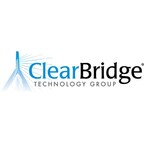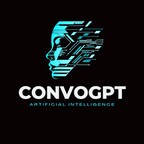GREENVILLE, S.C., April 5, 2025 /PRNewswire/ — In a breakthrough development for businesses seeking automation solutions, CONVO GPT launches its groundbreaking AI platform featuring “Sara,” an advanced artificial intelligence sales and recruiting Employee that works around the clock, revolutionizing how companies generate leads, close deals, and attract top talent. This is much greater than a Chatbot, this revolutionizes the Ai Automated Employee Landscape. Sara can do the work of over 100 Employees at the same time with out taking a break.
AI Sales Automation and AI Recruiting Solution Eliminates Human Limitations
CONVO GPT, the innovative AI automation platform owned by JDC USA and spearheaded by visionary CEO Jeremy David, has developed an intelligent business solution that outperforms traditional sales and recruiting methods by leveraging conversational artificial intelligence technology that never requires breaks, never misses follow-ups, and operates with machine-like efficiency while maintaining human-quality interactions.
“We’ve created an AI business solution that transforms how companies’ approach both revenue generation and talent acquisition,” explains Jeremy David, Founder & CEO of CONVO GPT. “Sara isn’t just another chatbot or automation tool – she’s a complete AI sales machine and AI recruiting powerhouse of an Employee that takes businesses from cold prospects to sold deals while simultaneously sourcing, screening, and engaging qualified candidates 24/7/365. Whether you’re in staffing, SaaS, financial services, healthcare, or any competitive industry, Sara eliminates the productivity limitations that plague human sales teams and recruiters.”
Full Conversational AI Platform Handles Both Outbound and Inbound Communication
CONVO GPT’s proprietary AI technology represents a complete conversational solution that handles both outbound prospecting and inbound customer interactions. This dual-capability platform combines advanced natural language processing, machine learning, and intelligent automation to create seamless, personalized interactions at scale across multiple channels:
Key Differentiator: Full Conversational AI
Complete outbound automation for proactive lead generation and candidate sourcing
Sophisticated inbound response management for website inquiries, form submissions, and direct messages
Seamless conversation handoffs between AI and human team members when needed
Unified analytics across both inbound and outbound communication flows
Sara: The Ultimate AI Sales Assistant
Automated lead generation and prospect qualification that never sleeps
AI-powered sales outreach across email, SMS, LinkedIn, and social DMs
Conversational sales intelligence that personalizes every interaction
AI appointment setting that converts prospects into scheduled meetings
Sales automation software that integrates with existing CRM systems
Sara: The 24/7 AI Recruiting Solution
Automated candidate sourcing across job boards and professional networks
AI resume screening that identifies qualified applicants instantly
Recruitment automation for staffing agencies and internal HR teams
Intelligent candidate engagement that maintains consistent communication
Recruiting analytics that track every touchpoint and conversion metric
Industry-Specific AI Solutions for Business Growth
CONVO GPT’s artificial intelligence platform delivers specialized automation tools for numerous industries seeking productivity enhancements, including:
Healthcare staffing automation for nurses, CNAs, and medical professionals
IT recruitment solutions for developers, engineers, and tech talent
B2B sales automation for SDR/BDR teams and outbound sales organizations
Financial services lead generation for banking, insurance, and lending
Real estate automation for agents, teams, and property management
Home services lead generation for solar, HVAC, and contractors
SaaS sales automation for technology companies and startups
Business Benefits That Drive ROI
Companies implementing CONVO GPT’s AI business solutions report significant advantages:
Reduced operational costs by replacing or augmenting expensive human resources
Accelerated sales cycles with continuous AI-powered engagement
Improved conversion rates through AI-optimized messaging sequences
Enhanced candidate experience with prompt, consistent communication
Scalable growth without proportional increases in headcount
Data-driven insights from comprehensive analytics and performance tracking
Enterprise-Grade Integration Capabilities
Sara functions as a true AI employee with seamless connectivity to your existing business systems:
Complete form handling – collects and sends forms just like a human team member
Webhook integration through Zapier and Make.com for automated workflows
API connectivity enabling integration with virtually any existing business system
Bidirectional data flow between Sara and your CRM, ATS, marketing platforms, and more
No-code setup that allows for rapid deployment without IT dependencies
Custom workflow automation that mimics your unique business processes
The platform operates on a straightforward subscription model with:
No commission structures
No revenue sharing
No long-term contractual commitments
Leadership in Artificial Intelligence Automation
CONVO GPT operates under the umbrella of JDC USA, focusing on innovative business process optimization through artificial intelligence. Jeremy David’s vision positions the company at the forefront of the AI automation revolution, helping businesses leverage intelligent systems to achieve unprecedented growth and efficiency.
Game-Changing Conversational AI: The Future of Business Communication
What truly sets CONVO GPT apart is its revolutionary conversational AI engine that transforms how businesses communicate with prospects, customers, and candidates. Unlike basic chatbots or limited AI assistants, Sara’s advanced conversational capabilities represent a fundamental paradigm shift:
Human-like interactions that pass the Turing test in both complexity and nuance
Context-aware conversations that maintain continuity across days or weeks of engagement
Emotional intelligence that adapts tone and approach based on recipient signals
Industry-specific knowledge that delivers relevant, specialized responses without generic templates
Multi-channel memory that creates cohesive conversation experiences across email, SMS, social, and more
“Our conversational AI technology isn’t just an incremental improvement – it’s a complete game-changer for how businesses develop relationships at scale,” emphasizes Jeremy David. “The difference is immediately apparent in both conversion rates and customer satisfaction metrics.”
Contact Information:
Jeremy David
Founder & CEO, CONVO GPT
Greenville, SC
www.convogpt.ai
+1 (864) 203-6204
support@convogpt.ai
About CONVO GPT
CONVO GPT, a division of JDC USA, delivers next-generation AI automation solutions that transform how businesses approach sales, marketing, and recruitment. By harnessing the power of artificial intelligence, machine learning, and natural language processing, CONVO GPT helps companies of all sizes eliminate manual processes, reduce overhead costs, and achieve sustainable growth through intelligent automation.
View original content to download multimedia:https://www.prnewswire.com/news-releases/meet-sara-the-ai-employee-who-never-sleeps–convo-gpt-launches-247-sales–recruiting-powerhouse-transforming-how-businesses-grow-302421308.html
SOURCE CONVO GPT

 Near Videos4 days ago
Near Videos4 days ago
 Near Videos5 days ago
Near Videos5 days ago
 Technology5 days ago
Technology5 days ago
 Technology5 days ago
Technology5 days ago
 Near Videos3 days ago
Near Videos3 days ago
 Technology3 days ago
Technology3 days ago









